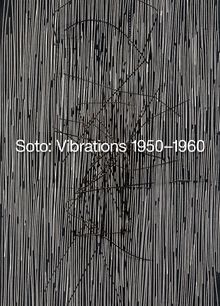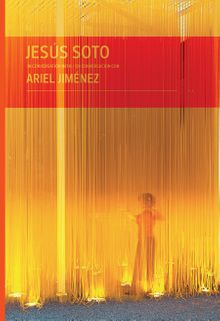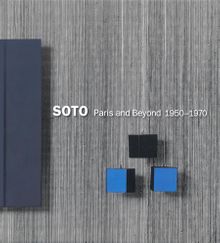ARTIST MONOGRAPHS
|
|
in stock $50.00 Free Shipping UPS GROUND IN THE CONTINENTAL U.S. |
 Soto: Vibrations 1950–1960
Soto: Vibrations 1950–1960
Published by Hauser & Wirth Publishers.
Text by Jean-Paul Ameline.
Renowned as a founder of kinetic art, Soto (1923–2005) explored the disintegration of the art object, breaking new ground while anticipating conceptual strategies to come. Soto: Vibrations 1950–1960, the first publication to focus on the critical first decade of the Venezuelan artist's life in Paris, follows Soto's career from his earliest Mondrian-inspired paintings restricted to pure yellows, reds, blues and greens to his plexiglass paintings that draw on the experiments of Duchamp and Moholy-Nagy. Imbued with vibration and movement, Soto's early works constitute a breakthrough in his output, laying crucial groundwork for his later kinetic works and the fluid style that shaped his artistic vocabulary.
Soto aimed to engage viewers as active participants in the process of perception and experimented with the serial repetition of color and geometric forms in an effort to create optical vibrations and what he referred to as "the displacement of the viewer."
PUBLISHER
Hauser & Wirth Publishers
BOOK FORMAT
Paperback, 8.5 x 11.75 in. / 120 pgs / 69 color.
PUBLISHING STATUS
Pub Date 7/23/2019
Active
DISTRIBUTION
D.A.P. Exclusive
Catalog: SPRING 2020
PRODUCT DETAILS
ISBN 9783906915425 TRADE
List Price: $40.00 CAD $55.00
AVAILABILITY
In stock
in stock $40.00 Free Shipping UPS GROUND IN THE CONTINENTAL U.S. |
 Jesús Soto in Conversation with Ariel Jiménez
Jesús Soto in Conversation with Ariel Jiménez
Published by Fundación Cisneros/Colección Patricia Phelps de Cisneros.
PUBLISHER
Fundación Cisneros/Colección Patricia Phelps de Cisneros
BOOK FORMAT
Hardcover, 6 x 9.25 in. / 198 pgs / 44 color / 5 bw.
PUBLISHING STATUS
Pub Date 2/29/2012
Active
DISTRIBUTION
D.A.P. Exclusive
Catalog: SPRING 2012 p. 108
PRODUCT DETAILS
ISBN 9780982354469 TRADE
List Price: $25.00 CAD $34.50 GBP £22.00
AVAILABILITY
In stock
in stock $25.00 Free Shipping UPS GROUND IN THE CONTINENTAL U.S. |
 Soto: Paris and Beyond, 1950-1970
Soto: Paris and Beyond, 1950-1970
Published by Grey Art Gallery, New York University.
Edited by Estrellita B. Brodsky. Text by Estrellita B. Brodsky, Sarah K. Rich.
PUBLISHER
Grey Art Gallery, New York University
BOOK FORMAT
Hardcover, 10.25 x 11.25 in. / 144 pgs / 74 color / 22 bw.
PUBLISHING STATUS
Pub Date 8/31/2012
Out of print
DISTRIBUTION
D.A.P. Exclusive
Catalog: FALL 2012 p. 123
PRODUCT DETAILS
ISBN 9780934349161 TRADE
List Price: $45.00 CAD $55.00
AVAILABILITY
Not available
STATUS: Out of print | 00/00/00 For assistance locating a copy, please see our list of recommended out of print specialists |

